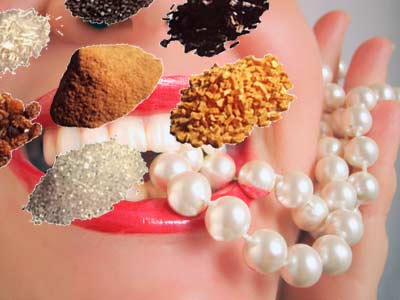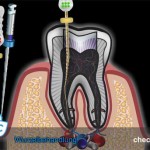Toothache 1/5
 This week we would like to show you how it all began, just like one of those cartoon documentaries on evolution – except that we’re doing the evolution of the tooth!
This week we would like to show you how it all began, just like one of those cartoon documentaries on evolution – except that we’re doing the evolution of the tooth!
–
You know how some stories are long and need to be told in parts. Well, this is going to be a five-part series, which we personally think is long enough!
–
–
Here is a short preview of all of this week’s episodes
- Getting my fillings replaced was a good idea, so why do I still have a toothache!
- One root canal after the other, but the toothache won’t go away?!
- Maybe you don’t have a toothache, but your face kind of hurts, is this a case of trigeminal neuralgia?!
- Teeth gone, toothache and desperation still around!
- The journey’s over, now you’ve made it to this article!
–
Getting my fillings replaced was a good idea, so why do I still have a toothache!
–
The sun is shining.
You’re finally making money on your own, you have long since left your parents’ house, and you may even have a family of your own. You have everything anybody could ever want – there’s a nice car in the driveway in front of your house, your four children are happily playing in the garden. You and your partner have achieved all your goals, you got your college degree, and then embarked on a great career – you’ve spent 15 years abroad and speak 4 languages.
–
We are parents, lovers, adventures and friends in one, the only thing we always forget about is our teeth, until one fine day we decide to replace our old amalgamate fillings by something newer, whiter and more natural, composite fillings (white fillings). For a small sum, say 50-150€ we get our spanking new white fillings.
–
Clouds on the horizon
You’re already on your way home when you start feeling pain after getting your fillings – one or more of your teeth start to ache! And when you bite down on something you get some kind of unpleasant „feeling“. Some of us are lucky, and it takes days, weeks, months, or even years until you start having problems with your teeth. Many of us only have problems for a short while but years later they come back in full force, and you have a bumpy ride ahead.
–
Toothache – what now – what happened?
Plastics fillings consist of little building blocks, called monomers – kind of like legos. Once the dentist points the strange lamp at the fillings, these monomers turn to polymers. The light puts the legos together – and the plastic hardens, a process called polymerisation.
–
But the plastic can only harden thoroughly if moisture is kept away from the tooth, and this can only be done using a cofferdam. Moreover, the plastic should be applied in thin layers and allowed to harden immediately, otherwise the bottom layers will stay soft. Done properly, this may take up to an hour!
–
These fillings should not be used on chewing surfaces either, as the polymers are unstable and monomers can start breaking out of the structure.
–
Depending on how the procedure was performed (moist, without layering, deep fillings) loose monomers may be present from the very beginning, and start to break away eventually. These monomers are also “poison” to the dental nerve, which gets damaged and gives you a toothache. This may happen right away, or it might take days, weeks, or months, depending on the depth of the filling, how well the filling was made and the quality of the materials used. Your judgement may also be influenced by your sensitivity to pain.
–
Stay tuned for: Once upon a time there was the tooth II
VN:F [1.9.22_1171]
Rating: 0.0/5 (0 votes cast)
VN:F [1.9.22_1171]
 –
–





